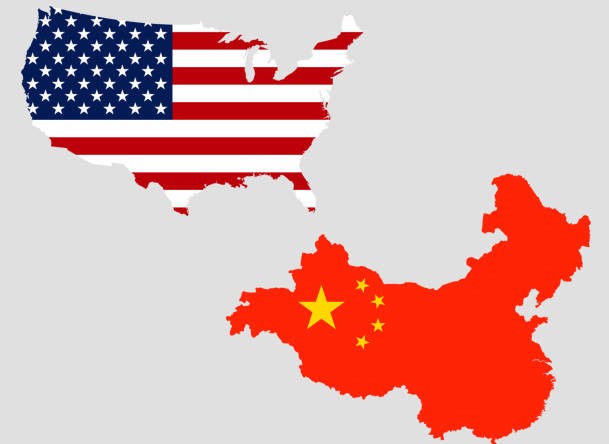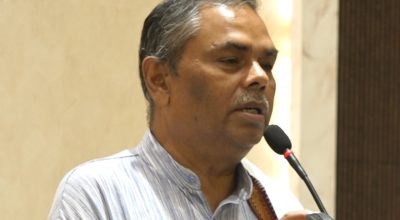
Huang Yiping
BEIJING, OCT 15 (PS): At an international symposium on “80 Years after Bretton Woods” in Hangzhou this past May, I proposed a “Global South Green Development Plan,” which some media later dubbed the Chinese Green Marshall Plan. The proposal includes three goals: assisting developing countries’ green development, expanding China’s aggregate demand, and enhancing China’s global leadership. Like the original Marshall Plan, the plan would provide large volumes of commercial credit and investment, policy loans, and government aid.
I was inspired by recent discussions about China’s overcapacity in key green industries: electric vehicles (EVs), lithium batteries, and solar panels. During a discussion with Peking University professors in April, US Secretary of the Treasury Janet Yellen raised this issue and voiced two concerns: that Chinese overcapacity looked like the result of state subsidies, and that it had reached a scale that was disrupting international markets. A month later, the United States announced a 100% tariff on EVs from China.
Defining “overcapacity” can be controversial. As some Chinese experts have pointed out, if Chinese companies can sell their products, whether at home or abroad, there is no “overcapacity.” So, if we understand overcapacity as a case of supply exceeding demand, it may be useful to distinguish between the domestic and the global context.
Three sets of factors are relevant here: macroeconomic imbalances, explicit and implicit subsidization, and the size of the industry in question. “Domestic” overcapacity has characterized China’s entire post-1970s reform period, because the country has produced more than it consumes, as evidenced by a large current-account surplus. The first step to addressing overcapacity, then, is to balance the current account. In fact, Chinese authorities have been working toward this goal ever since the 2008 global financial crisis, by boosting domestic consumption.
Americans and Europeans are more concerned about explicit and implicit state subsidies, which they claim give Chinese manufacturers an unfair advantage in international markets. But China’s explicit subsidies for EVs – including direct subsidies, tax reductions, and exclusive licenses – are about average among a dozen countries surveyed in a 2022 working paper, and they are less than those provided by the Norwegian, US, French, and German governments.
Implicit subsidies – reduced factor costs – are less transparent. In a July speech on “Chinese overcapacity and the global economy,” US Under Secretary of the Treasury for International Affairs Jay Shambaugh cited an analysis by the Center for Strategic and International Studies that estimated China’s implicit subsidies to be about 5% of GDP – ten times the level of the US, Japan, and some other countries.
While these figures are similar to what I found in my own research about 15 years ago, Shambaugh and the CSIS researchers’ interpretation is flawed. China’s factor-cost distortion was devised not as part of an industrial strategy, but as a transition policy, and most of the support went to state-owned enterprises. If anything, privately owned Chinese green-tech companies competing internationally were significantly disadvantaged by this policy.
That said, various “investment-promotion programs” introduced by local governments have provided implicit subsidies – for example, reduced land-use fees – to private green-tech companies. Hence, the European Union’s recent investigation suggests that subsidies permit Chinese EVs to be sold for 20% less than models produced in the EU. But the support from local governments is rapidly declining, partly because many are facing fiscal difficulties, and partly because the central government has begun prohibiting such irregular and illegal subsidies.
Another issue is that the perceived impact of Chinese overcapacity is exaggerated by the sheer size of the Chinese economy. China is a massive country, and its economic policies tend to concentrate investment in certain sectors and industries. This can create difficulties for China’s trading partners. The point, though, is that the size of China’s green-tech sectors is probably a larger problem than subsidies.
China does need to reduce the influence of state direction on resource allocation, and it needs to work with other countries to ensure mutual prosperity through cooperation. This was the rationale behind my proposal for a green development plan for the Global South. China has already built substantial production capacity in green-tech sectors, but it faces rising barriers in developed markets.
At the same time, developing countries are struggling to advance their own green development agendas. According to the United Nations, “Developing countries need renewable energy investments of about $1.7 trillion annually but attracted foreign direct investment in clean energy worth only $544 billion in 2022.” Fortunately, China has the technology, production capacity, and capital (commercial financing, policy financing, and government aid) to help fill this gap. It can drive global green development, boost its own economy, and strengthen its international leadership all at the same time.
Interestingly, in late August, Brian Deese, the director of the White House National Economic Council from 2021 to 2023, made the “case for a clean energy Marshall Plan” and alluded to the fact that China is considering the same idea. Ideally, the two countries would collaborate on this initiative. But even if they each pursued separate green Marshall Plans, they would accelerate the global green transition dramatically.
Huang Yiping, Dean of the National School of Development and a distinguished professor at Peking University, is a member of the Monetary Policy Committee of the People’s Bank of China.
Copyright: Project Syndicate, 2024.
www.project-syndicate.org












